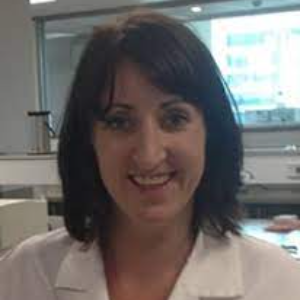Title : The use of self-immolative polymers to control cellular delivery
Abstract:
Nanoparticles are of interest for the delivery of therapeutics as they are capable of targeting drug release specifically to diseased cells and tissue. Self-assembled polymeric carriers have generated particular attention for drug delivery applications due to their simple and versatile synthesis. However, such carriers are still limited by inefficient delivery to target regions within the cell. Therefore, there is a need to better understand their cellular response. One of the key limitations for the delivery of biological therapeutics such as DNA or proteins is delivery to the cytosol. It is well known that nanoparticles are internalised into acidic, cellular compartments (lysosomes/endosomes) and need to efficiently escape from this region to be effective. To design such materials one interesting pH responsive polymer is poly(2-(diethylamino)ethyl methacrylate) (PDEAEMA), as it undergoes a transition from hydrophobic to hydrophilic in a pH range consistent with endosomal compartments. Nanoparticles using this polymer have shown the potential to facilitate endosomal escape based on pH induced change in the nanoparticle structure. However, the extent of endosomal escape and the mechanism is still unclear. Another type of polymer with potential application in targeted delivery is self-immolative polymers, which undergo depolymerisation after cleavage of a responsive end-cap.
In this presentation, we discuss the synthesis of nanoparticles combining pH responsive and self-immolative building blocks. It was shown these nanoparticles disassembled in response to variations in both pH and ROS concentration. Fluorescence imaging and leakage assays were combined to study the interactions of the nanoparticles with the endosomal membrane. This interaction could be tuned by the combining the polymer components in different ratios. These modular and responsive nanoparticles have tunable interaction with endosomal compartments and thus offer potential for the delivery of biological therapeutics.
Audience take away:
• Explain how self-immolative polymers can be used to engineer responsive delivery systems
• It will demonstrate how particle structure can be used to tune cellular delivery.
• It will show how fluorescence imaging techniques can be used to study mechanisms of nanoparticle interactions with cells.



